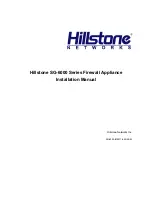
114
Configuring MAC authentication
Overview
MAC authentication controls network access by authenticating source MAC addresses on a port.
The feature does not require client software, and users do not have to enter a username and
password for network access. The device initiates a MAC authentication process when it detects an
unknown source MAC address on a MAC authentication-enabled port. If the MAC address passes
authentication, the user can access authorized network resources. If the authentication fails, the
device marks the MAC address as a silent MAC address, drops the packet, and starts a quiet timer.
The device drops all subsequent packets from the MAC address within the quiet time. The quiet
mechanism avoids repeated authentication during a short time.
NOTE:
If the MAC address that has failed authentication is a static MAC address or a MAC address that
has passed any security authentication, the device does not mark the MAC address as a silent
address.
User account policies
MAC authentication supports the following user account policies:
•
One MAC-based user account for each user. The access device uses the source MAC
addresses in packets as the usernames and passwords of users for MAC authentication. This
policy is suitable for an insecure environment.
•
One shared user account for all users. You specify one username and password, which are not
necessarily a MAC address, for all MAC authentication users on the access device. This policy
is suitable for a secure environment.
Authentication methods
You can perform MAC authentication on the access device (local authentication) or through a
RADIUS server.
Local authentication:
•
MAC-based
accounts
—The access device uses the source MAC address of the packet as the
username and password to search the local account database for a match.
•
A shared account
—The access device uses the shared account username and password to
search the local account database for a match.
RADIUS authentication:
•
MAC-based
accounts
—The access device sends the source MAC address of the packet as
the username and password to the RADIUS server for authentication.
•
A shared account
—The access device sends the shared account username and password to
the RADIUS server for authentication.
For more information about configuring local authentication and RADIUS authentication, see
"
."
Summary of Contents for 10500 series
Page 326: ...312 No duration limit for this SA ...












































